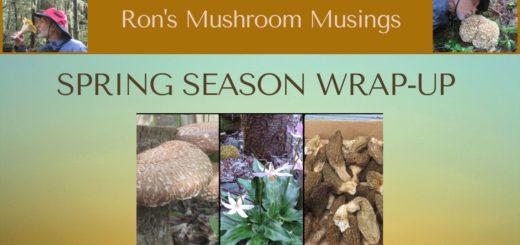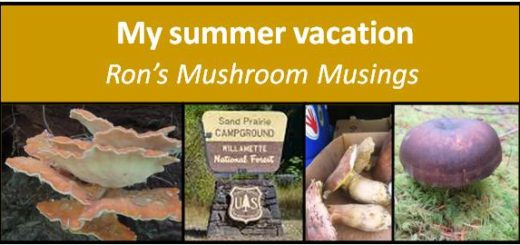Who are you?
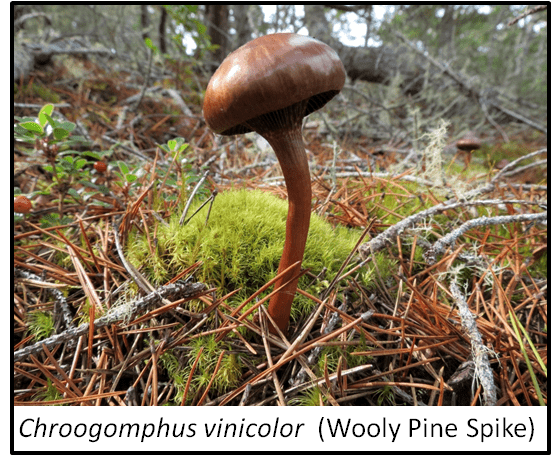
Isn’t it frustrating to hike through the woods and see all those mushrooms and wonder who they are? We learn to identify that small handful of edibles we like to hunt for and those that might kill us, but what about all the other mushrooms we see. I agree that some are difficult or almost impossible to identify; however, there are some with certain features that make them much more recognizable. One of these is a mushroom called Chroogomphus vinicolor or more commonly known as the Pine Spike. There are others of this genus in our area but this species has a cap color reminiscent of mahogany and is quite attractive when in prime condition. It can look as if it was carved from wood. If you pick one, you’ll notice that the gills are widely spaced and tend to be subdecurrent to decurrent.
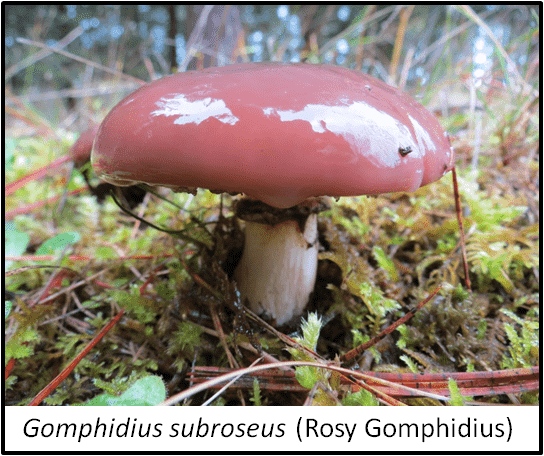
A spore print will show a dark gray to black spore color. As for edibility, Chroogomphus species are generally considered edible but not delectable. Another mushroom in the same family of Gomphidiaceae is even easier to identify. This is Gomphidius subroseus or commonly called the rosy Gomphidius. That sheen you see coming off the mushrooms cap doesn’t begin to express just how slimy this mushroom can be. Noah Siegel refers to this mushroom as rosy slime spike, with emphasis on the word slime. As long as conditions are wet, a quick rub across the cap of rosy will outdo the slobber of any English bulldog and leave you reaching for a napkin. The gill structure of rosy is very similar to the pine spike except the gill color will be whitish to darker gray as it ages.
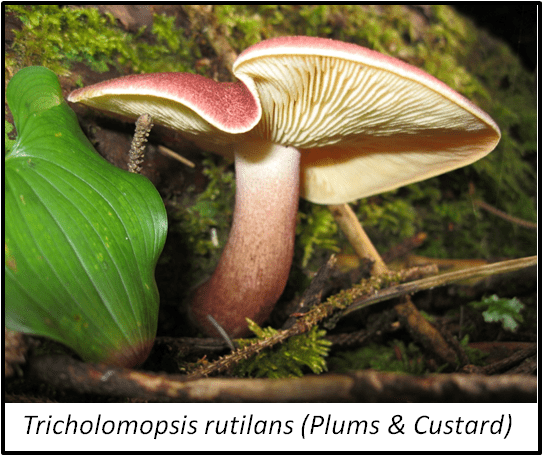
If you pick the mushroom you’ll notice a yellowish color on the lower part of the stem. Mushrooms in this genus are also considered edible but David Arora recommends peeling off the slimy cap prior to cooking it. Another very attractive mushroom comes from a genus whose name could have been that of a dinosaur from the Jurassic era, Tricholomopsis rutilans. This mushroom’s more common name of plums and custard relates to its plum-red colored scales on the cap and custard yellow colored gills. The stem has the same basic color pattern as the cap. This is another mushroom that is considered edible with a mediocre flavor.
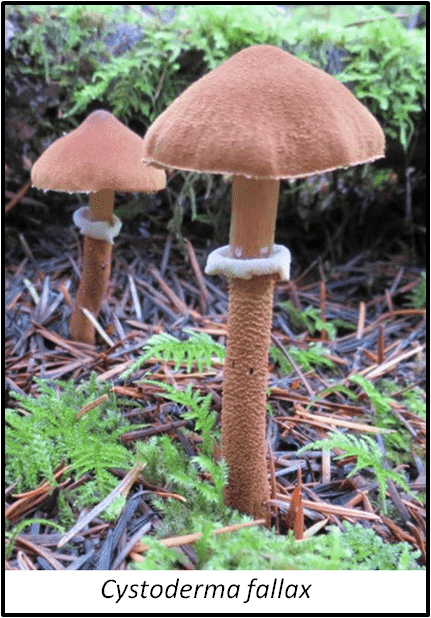
Lastly, how about that very attractive mushroom known as Cystoderma fallax. I really enjoy finding this mushroom with its truly stately appearance and picturesque stem ornamentation. The brownish cap has a slightly rough, granular looking surface with contrasting light creamy gills. If you do a spore print of the cap it will be whitish in color. The stem will be very smooth above the ring and quite scaly below. While it is not a very large mushroom, it does make up in attractiveness what it lacks in size. The edibility of mushrooms in the genus Cystoderma is unknown, so it is strongly recommended to simply enjoy it in the woods where it lives rather than taking a chance on eating it. Health and safety is always number one when it comes to eating mushrooms. In any event, keep your eyes out for one of these interesting and easily recognizable mushrooms so you can now say, I know who you are.
References
All That the Rain Promises and More by David Arora
Mushrooms of the Pacific Northwest by Steve Trudell & Joe Ammirati
Mushrooms of the Redwood Coast by Noah Siegel & Christian Schwarz

